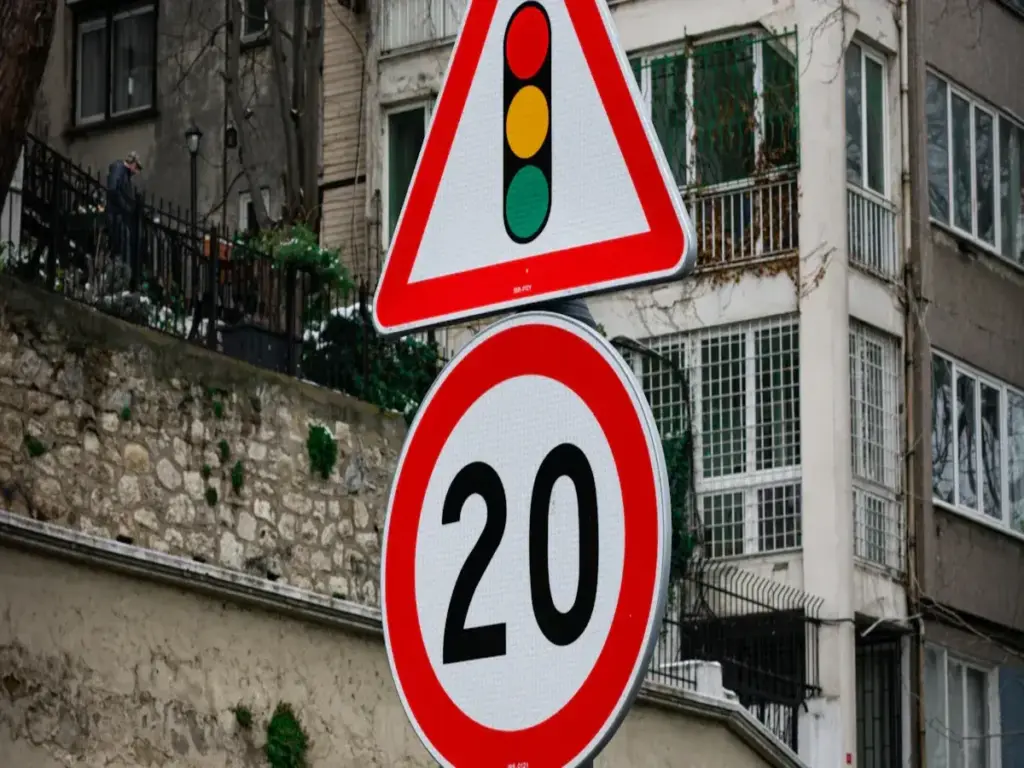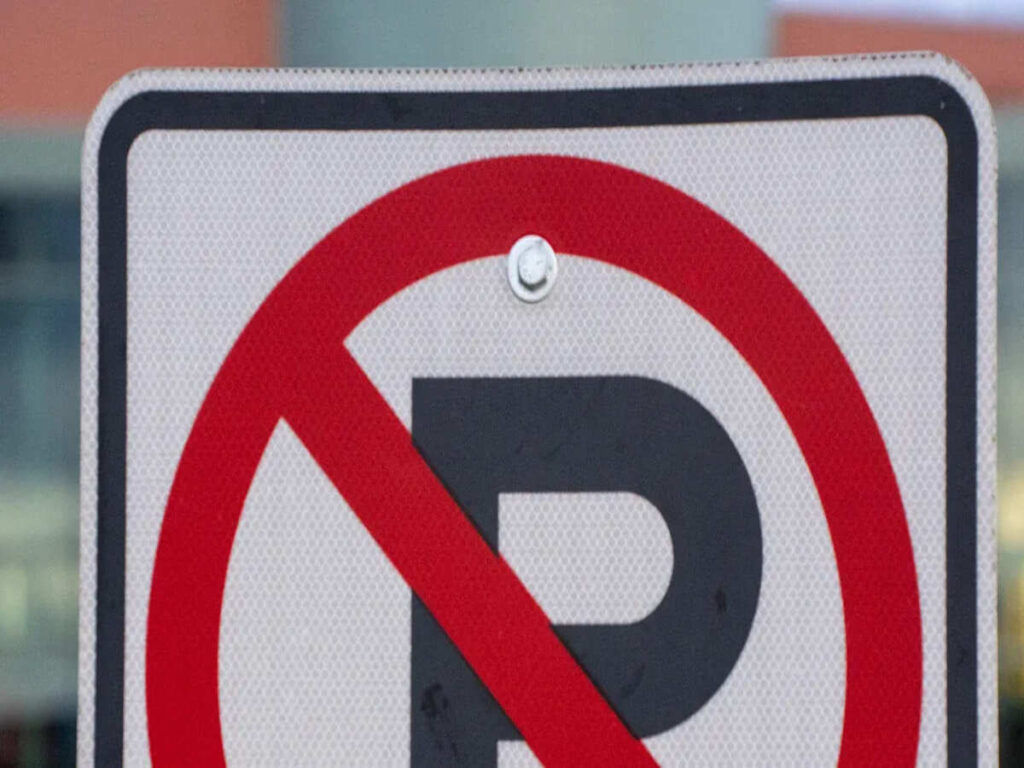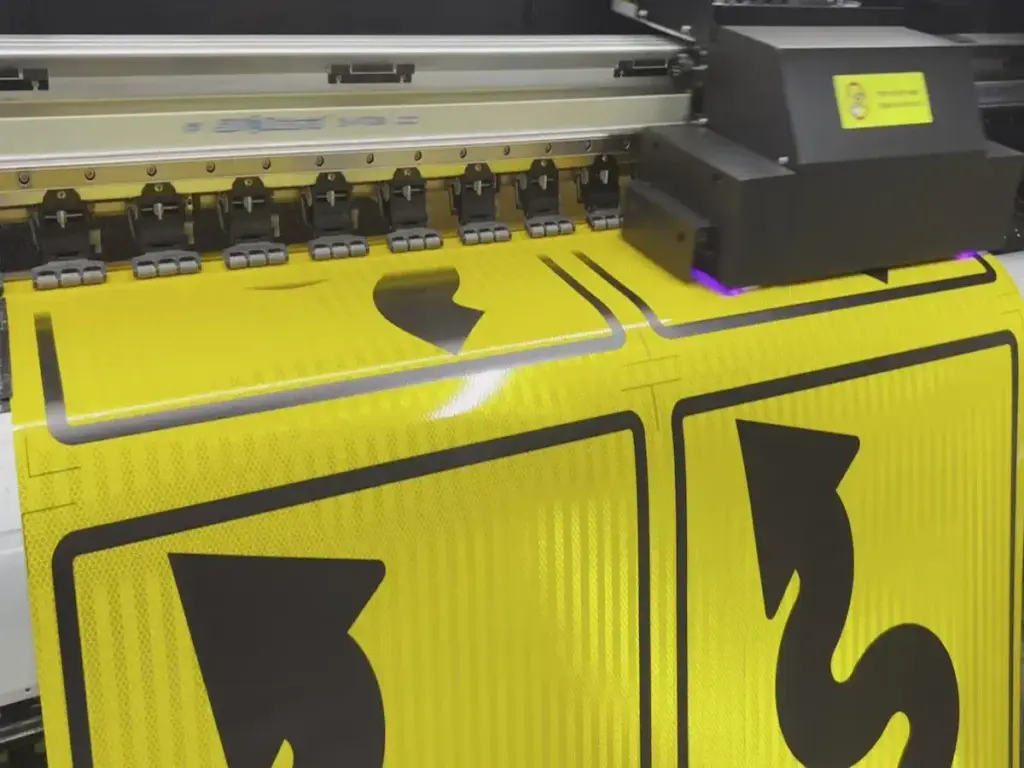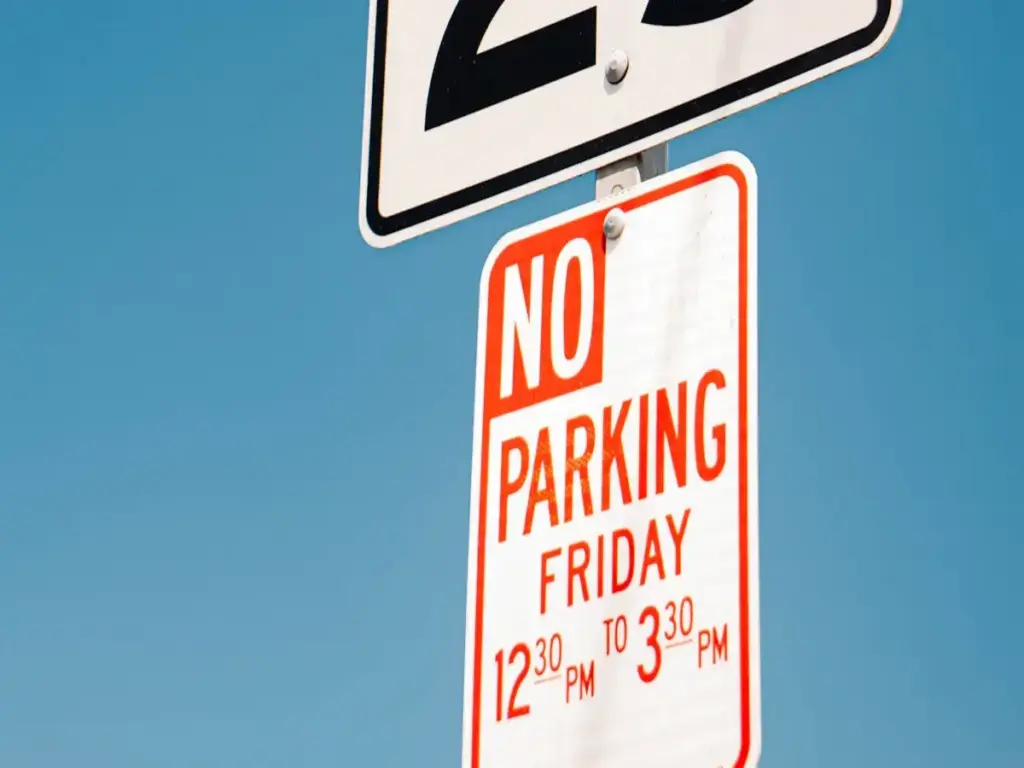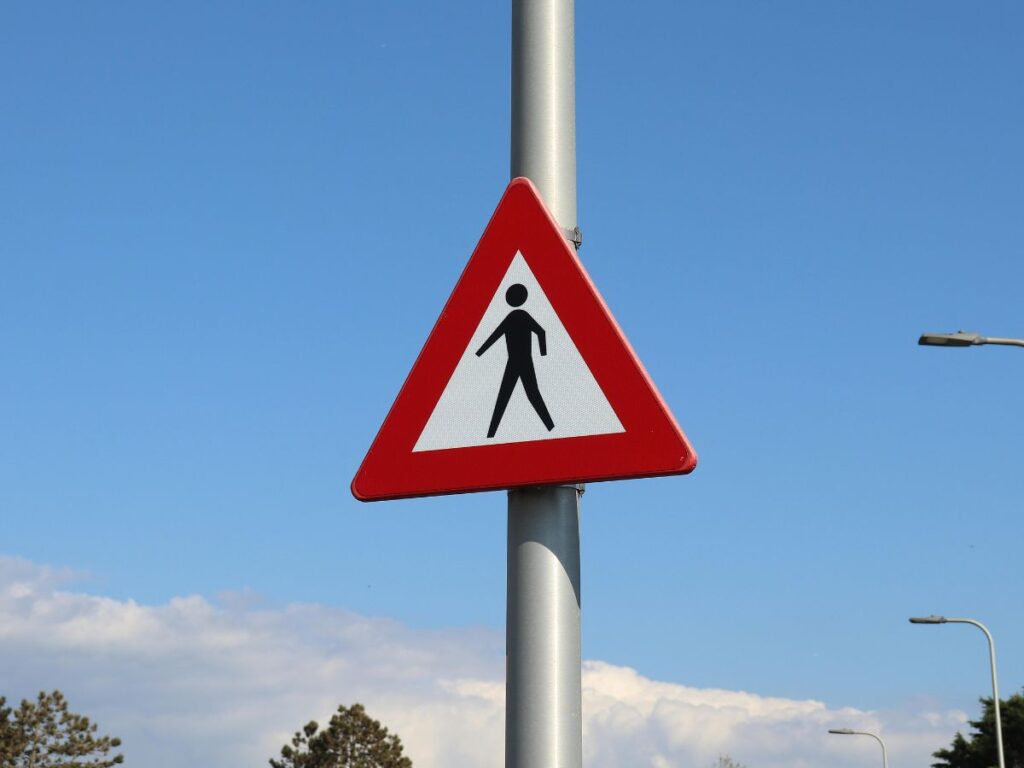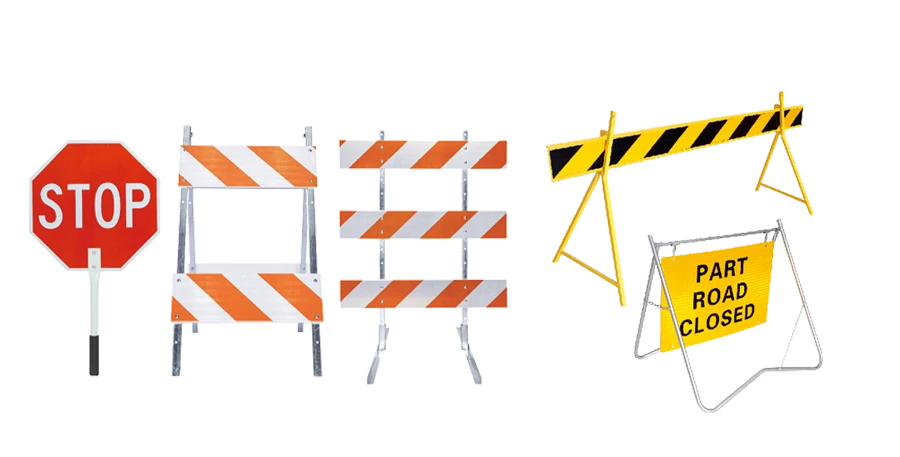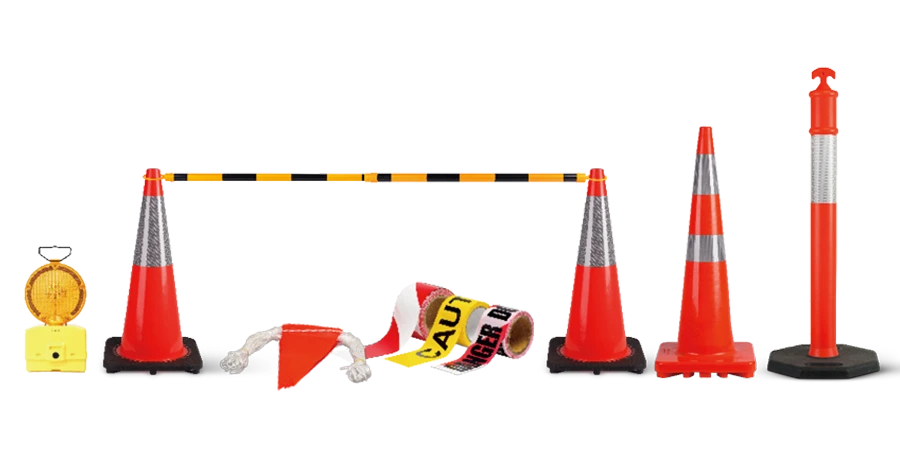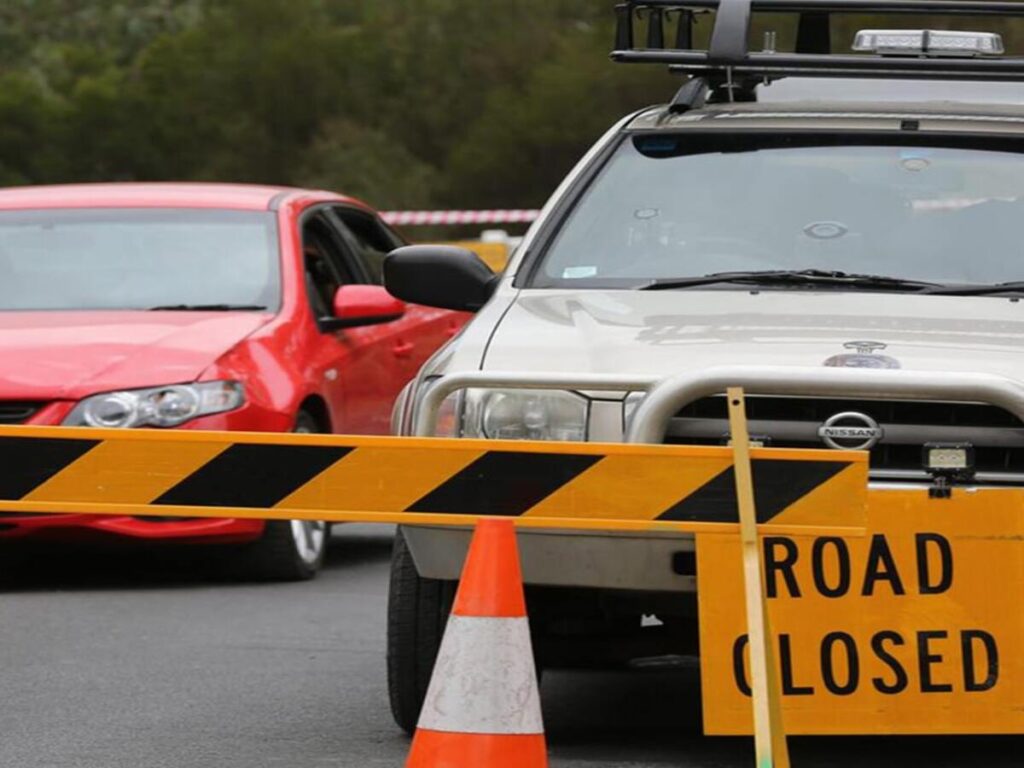
لا تزال السقوط هي السبب الرئيسي للإصابات السيئة والوفيات في مواقع البناء. 48% من الإصابات و 30% تحدث الوفيات بسبب السقوط. حديث التفتيش في نيو ساوث ويلز أعطى 192 إشعارات بالمخاطر المرتبطة بالعمل في المرتفعات. هذا يدل على أن الخطر لا يزال موجودًا. يوضح الجدول أدناه عدد الوفيات الناتجة عن السقوط من المرتفعات في المناطق الكبيرة:
| منطقة | نسبة الوفيات من السقوط |
|---|---|
| الولايات المتحدة | 36.9% |
| المملكة المتحدة | 31% |
| أستراليا | 12% |
حواف غير محمية ومناطق عمل عالية تجعل الأمور أكثر خطورة على العمال. توضح هذه الأرقام سبب أهمية الحواجز السلامة للحفاظ على سلامة العمال. تساعد لوحات الحاجز على التوقف عن السقوط والحفاظ على قواعد السلامة قوية في مواقع البناء.
في أوبترافيك, نحن نقدم مجموعة من حواجز السلامة عالية الجودة و لوحات الحاجز مصممة لمنع الحوادث وحماية العمال. تم تصميم منتجاتنا لتلبية أعلى معايير السلامة, ضمان بيئة عمل آمنة. استكشف اختيارنا اليوم لتعزيز السلامة في مواقع البناء الخاصة بك.
الوجبات الرئيسية
- لوحات الحواجز هي أدوات أمان مهمة. يتوقفون عن السقوط من خلال إظهار مكان الحواف الخطرة. إنهم يساعدون في الحفاظ على سلامة العمال في مواقع البناء.
- تعتمد لوحة الحاجز الصحيح على المخاطر في الموقع. يعتمد ذلك أيضًا على الطقس والوقت الذي تحتاجه إلى الحواجز.
- إن وضع لوحات الحاجز في أماكن محفوفة بالمخاطر يساعد كثيرًا. تشمل هذه الأماكن الأسطح, السقالات, وثقوب الأرضية. تظهر الألواح أين تكون آمنة وأين لا تكون كذلك.
- لوحات الحاجز تعمل بشكل أفضل مع أنظمة حماية السقوط الأخرى. وتشمل هذه السخرية وشباك السلامة. هذا يجعل السلامة أقوى.
- اتباع قواعد السلامة أمر مهم للغاية. غالبًا ما يساعد التحقق من لوحات الحواجز في إيقاف الحوادث. كما أنه يساعد على تجنب الغرامات القانونية ويبقي الجميع آمنين.
مخاطر السقوط على مواقع البناء
إحصائيات الإصابة
السقوط هي السبب الرئيسي للإصابات والوفيات في مواقع البناء. في 2022, يسقط, زلات, والرحلات تسببت 38.4% الوفيات في العمل في البناء. كانت مواقع البناء تقريبًا 20% من كل وفاة العمل. تقول الحملة الوطنية للسلامة في السلامة أننا يجب أن نستمر في العمل لوقف السقوط. يقع من الأماكن المرتفعة وحواف غير محمية تسبب حولها 47% الحوادث على مواقع البناء. ما يقرب من نصف جميع الإصابات تحدث عندما يعمل الناس عاليين. في المملكة المتحدة, تسبب في الارتفاع 51% من وفيات البناء في 2022/23. ارتفعت الوفيات من السقوط 22% من العام الماضي. معظم الناس الذين ماتوا كانوا رجال. العمال المسنين 65 وكبار السن كان أعلى خطر. يوضح الجدول أدناه أحدث الأرقام:
| الوصف الإحصائي | قيمة / التفاصيل |
|---|---|
| وفاة عامل البناء في 2023/24 | 51 (37% من جميع الصناعات) |
| زيادة في السقوط القاتلة من الارتفاع من 2022/23 ل 2023/24 | 22% يزيد (من 41 ل 50 حالات الوفاة) |
| يسقط من الارتفاع % من وفيات البناء في 2022/23 | 51% |
| زيادة الوفيات في البناء مقارنة بـ 2018/19 | 70% أعلى |
إن البقاء آمنًا في مواقع البناء يعني معرفة هذه المخاطر وتوقف السقوط قبل حدوثها.
مناطق عالية الخطورة
بعض أجزاء مواقع البناء أكثر خطورة من غيرها. تسقيف, السقالات, وبناء الجدران الخارجية محفوف بالمخاطر للغاية. يمكن للعمال أن يتأذى على السلالم, المباني غير المكتملة, والإطارات الصلب. حواف غير محمية, ثقوب في الأرضيات, والممرات الفوضوية تجعل السقوط أكثر احتمالا. الشركات الصغيرة التي تقل عن عشرة عمال لديها حوالي 70% من السقوط القاتل. الأسباب الشائعة المفقودة في الدرابزين, المعدات المكسورة, وليس ما يكفي من التدريب. غالبًا ما يتم إعداد السلالم والسقالات بشكل خاطئ أو مفقود أجزاء أمان. من المهم للغاية فحص المعدات واستخدام حماية السقوط بالطريقة الصحيحة.
- وتشمل المناطق عالية الخطورة:
- الأسطح والسقالات
- السلالم والمنصات المرتفعة
- الفتحات في الطوابق والجدران
- الممرات الفوضوية أو الزلقة
تحتاج مواقع البناء إلى إصلاح هذه المخاطر للحفاظ على سلامة العمال وإيقاف الحوادث. تساعد لوحات حاجز المرور في إظهار مكان الخطر وتوقف السقوط في هذه الأماكن المحفوفة بالمخاطر.
لوحات الحاجز والدرابزين
لوحات الحواجز مهمة للغاية للسلامة في مواقع البناء. هم جزء من أنظمة الدرابزين. هذه الأنظمة تبقي العمال في مأمن من السقوط عند الحواف, ثقوب, سلالم, والمنحدرات. حواجز السلامة, مثل الدرابزين ولوحات الحاجز, اصنع خطًا قويًا يمنع الأشخاص والمعدات من السقوط. كما يحذرون العمال من الأخطار ويمنعونهم من الأماكن غير الآمنة. حواجز السلامة مهمة جدًا لأنها تمنح حماية سقوط سلبية. عندما تضع في الطريق الصحيح, أنها تساعد في إزالة المخاطر.
الأنواع والمواد
تستخدم مواقع البناء أنواعًا مختلفة من لوحات الحواجز وحواجز السلامة. كل نوع له وظيفته الخاصة ويناسب احتياجات مختلفة. الأنواع الرئيسية:
- لوحات الحاجز المؤقتة: هذه خفيفة وسهلة التحرك. إنها جيدة للوظائف القصيرة أو عندما تتغير مجالات العمل.
- لوحات الحاجز الدائمة: هذه تبقى في مكان واحد لفترة طويلة. يتم استخدامها على الحواف أو السلالم.
- لوحات الحاجز المتنقلة: يمكن نقل هذه بسرعة. إنها مفيدة عندما تتحرك الأخطار حول الموقع.
حواجز السلامة تعال في العديد من الأشكال, مثل الدرابزين, الأسوار, شبكات السلامة, ومتاريس الطرق. المواد المستخدمة تتغير مدى قوة, قاسٍ, ويسهل رؤية الحاجز. المواد المشتركة:
| نوع الحاجز | الاستخدامات الشائعة | المواد المستخدمة |
|---|---|---|
| النوع الأول من المتاريس | إغلاق حارة, منع أرصفة المشاة | البلاستيك (مع أغطية عاكسة), خشب, أرجل الصلب المجلفن |
| من النوع الثاني المتاريس | إغلاق الطرق, الالتفاف | البلاستيك, خشب, أرجل الصلب المجلفن |
| من النوع الثالث المتاريس | مشاريع طويلة الأجل/قصيرة الأجل, إغلاق الطرق | البلاستيك, خشب, تذييل الصلب المجلفن, أنبوب مربع, الزاوية الحديد |
| الحواجز جيرسي | فصل حارة, حماية تأثير السيارة | الملموسة المعززة, البلاستيك |
| مليئة بالماء/مملوءة بالرمل | حركة المرور والتحكم في الحشود | البلاستيك (مليئة بالماء أو الرمال) |
| حواجز الصلب | السيطرة على الحشد, سياج المناطق المقيدة | فُولاَذ |
| حواجز لوحة الإعلانات | دعاية, السيطرة على الحشود في الأحداث | البلاستيك (مقاومة للأشعة فوق البنفسجية) |
| الشمعات | الحماية الدائمة للمباني, التحكم في الوصول | الصلب أو غيرها من المواد المتينة |
درجات الصلب قوية للغاية وتستمر لفترة طويلة. هم الأفضل للأماكن التي سيبقى فيها الحاجز. الحواجز البلاستيكية خفيفة وبسيطة للتحرك. إنها جيدة للاستخدام على المدى القصير. الحواجز الملموسة قوية للغاية ولكن من الصعب التحرك. المواد التي تختارها تتغير مدى قوة, من السهل رؤيته, وبسيطة لإعداد الحاجز. كما أنه يغير عدد المرات التي تحتاج إلى التحقق منها وإصلاحها. إن التحقق من الحواجز غالبًا ما يجعلهم يعملون بشكل جيد.
ملحوظة: أفضل مادة تعتمد على المخاطر, طقس, وكم من الوقت سيبقى الحاجز. رعاية الحواجز تبقي الجميع آمنين.
الموضع والوضوح
من المهم للغاية وضع لوحات الحواجز وحواجز السلامة في المكان الصحيح. وضع العمال هذه الحواجز على حواف المنصات العالية, حول السقالات, وبالقرب من الثقوب أو الدرج. من خلال وضع الحواجز في البقع المحفوفة بالمخاطر, تقوم الفرق بوضع خطوط واضحة بين أماكن آمنة وغير آمنة.
تستخدم لوحات الحاجز في أنظمة حماية الحافة أشياء مثل حواجز الشبكات, وظائف السلامة, وموازنة الأقدام. تعطي هذه الأجزاء حماية قوية للحافة وتوقف السقوط من حواف الألواح والسلالم. غالب. هذه تمنع الأشياء من السقوط وإيذاء الناس أدناه.
- حواجز السلامة:
- إظهار مسارات آمنة ومناطق العمل.
- منع الناس من الذهاب إلى أماكن خطرة.
- اتبع قواعد ومعايير السلامة.
- خفض فرصة الحوادث ومشاكل الشركة.
- استخدم الألوان الزاهية والشرائط اللامعة حتى يتمكن الناس من رؤيتهم بسهولة.
إن وضع الحواجز في الأماكن الذكية وجعلها سهلة رؤيتها تساعد الجميع على معرفة مكان وجودها آمنًا. كما أنه يساعدهم على الابتعاد عن مخاطر السقوط. أفكار جديدة مثل التصميمات المعيارية والعلامات الخاصة تجعل حواجز السلامة أفضل في الحفاظ على سلامة العمال وإظهار أين يذهبون.
الحواجز التي يتم وضعها في المكان الصحيح واعتكرت بشكل جيد وإنقاذ الأرواح ومساعدة الجميع على البقاء آمنة في الموقع.
أنظمة حماية السقوط
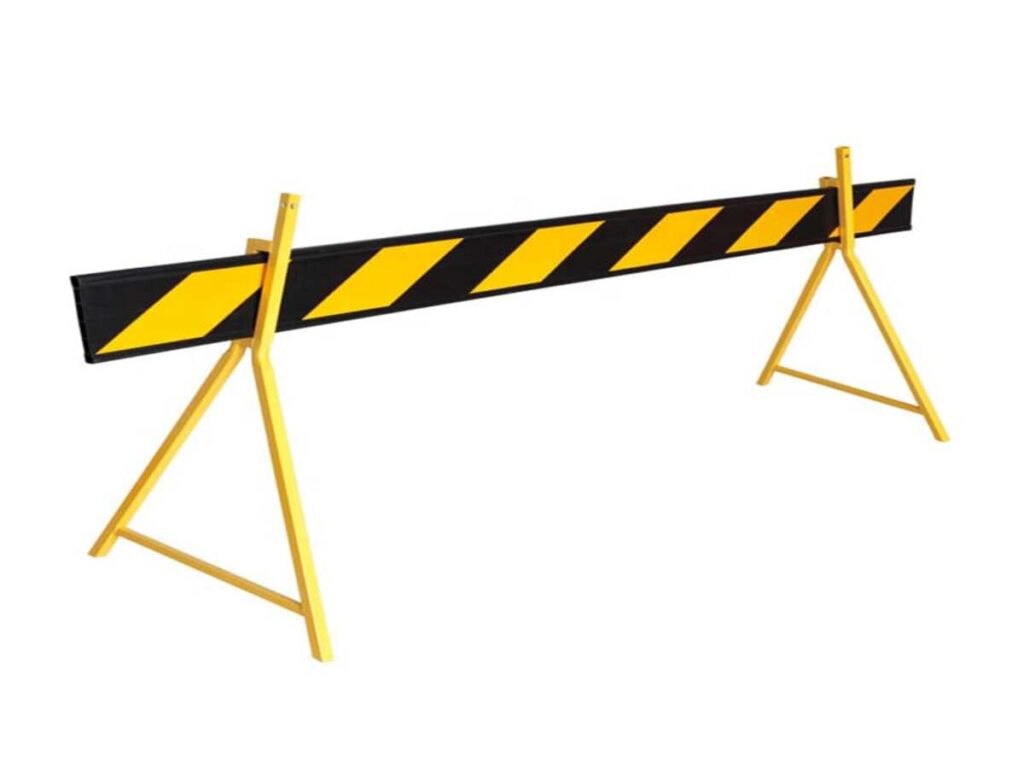
التكامل مع الضوابط الأخرى
تستخدم مواقع البناء أنظمة حماية السقوط مع العديد من حواجز السلامة. الدرابزين, لوحات الحاجز, ولوحات إصبع القدم هي الدفاع الأول. هذه الحواجز تمنع العمال من الاقتراب من الحواف الخطرة. تعمل الدرابزين والدرابزين مع لوحات الحاجز لحماية الأماكن المرتفعة والمناطق المحفوفة بالمخاطر. تساعد شباك السلامة من خلال اصطياد العمال أو الأشياء التي تقع. تسخير ونقاط المرساة هي نسخة احتياطية إذا كان شخص ما يتجاوز الحواجز الرئيسية.
| مكون الوقاية من السقوط | الدور والتكامل مع لوحات الحاجز وغيرها من الضوابط |
|---|---|
| لوحات الحاجز (الدرابزين, ألواح إصبع القدم) | بمثابة حواجز مادية, منع الناس من الوصول إلى المخاطر وإعطاء حماية المجموعة. |
| تسخير (أنظمة اعتقال الخريف الشخصية) | امنح كل عامل الحماية من السقوط عن طريق ربطها بنقاط مرساة آمنة. |
| شبكات السلامة | قبض على الناس أو الأشياء, إعطاء أمان إضافي بعد الحواجز والاسموات. |
| الدرابزين والدرابزين | إعطاء حماية الحافة, غالبًا ما تستخدم مع لوحات الحاجز من أجل السلامة الكاملة. |
تعمل حواجز السلامة بشكل أفضل عند استخدامها مع أنظمة اعتقال الخريف الأخرى. إن استخدامها معًا يجعل نظام حماية سقوط قوي يتعامل مع العديد من المخاطر في وقت واحد.
السلامة متعددة الطبقات
يستخدم نظام حماية السقوط الجيد العديد من طبقات السلامة. يساعد التسلسل الهرمي لعناصر التحكم في توجيه هذه الخطة:
| مستوى التسلسل الهرمي | وصف |
|---|---|
| القضاء | قم بإزالة الخطر بالكامل, مثل عدم العمل العالي. |
| الاستبدال | تبديل الخطر من أجل طريقة أكثر أمانًا, مثل استخدام المصاعد بدلاً من السلالم. |
| الضوابط الهندسية | وضعت في الدرابزين, لوحات الحاجز, والدرابزين لإبعاد العمال عن المخاطر. |
| الضوابط الإدارية | تغيير كيفية عمل الناس, إعطاء التدريب, ووضع قواعد واضحة. |
| معدات الحماية الشخصية (معدات الوقاية الشخصية) | استخدم تسخير أنظمة اعتقال السقوط باعتباره الدفاع الأخير. |
لا تحتاج الدرابزين والأنظمة السلبية الأخرى إلى العمال لفعل أي شيء. يحافظون على سلام الناس عن طريق التخلص من الأماكن الخطرة. حماية السقوط النشطة, مثل تسخير, يضيف طبقة أخرى ولكن يجب استخدامها بشكل صحيح. حماية السقوط الجيدة تعني أيضًا فحص المعدات, وضع خطط الموقع, وإعطاء التدريب.
تُظهر المشاريع الحقيقية أن استخدام الحواجز, الدرابزين, ويخفض أنظمة الاعتقال الخريف معًا الحوادث. الحواجز المعيارية, ألوان زاهية, وتساعد الشرائط اللامعة الناس رؤيتهم واستخدامهم في أماكن مختلفة. إن التحقق من الحواجز في كثير من الأحيان ووضعها في المكان الصحيح يبقي النظام يعمل بشكل جيد.
يعني استخدام العديد من خطوات السلامة إذا فشل المرء, لا يزال البعض الآخر يحمي العمال.
الامتثال لأنظمة السلامة وتجنب الغرامات
لوائح السلامة في نيو ساوث ويلز ومعايير حماية السقوط
مواقع البناء في أستراليا, المملكة المتحدة, ويجب على الولايات المتحدة اتباع قواعد صارمة للدراسات على الدرابزين ولوحات الحاجز. هذه القواعد تساعد على التوقف عن السقوط والحفاظ على سلامة العمال. في أستراليا, ال AS/NZS 1170.1 معيار يقول كيف يجب أن تكون الدرابزين العالي وكم الوزن الذي يجب أن يحملوه. كما أنه يضع حدود السلامة. تستخدم المملكة المتحدة BS6399 و EN 1991. هذه القواعد تحتاج إلى درابزين قوية ومعايير تحميل الحشود العليا. إدارة السلامة والصحة المهنية تقول القواعد في الولايات المتحدة أن الدرابزين يجب أن تكون بين 99 و 114 طول سنتيمترات. يجب أن تكون ألواح أمور على الأقل 9 سنتيمترات عالية. يحتاجون أيضًا إلى فجوات صغيرة لمنع الأشياء من السقوط.
| المنطقة/الرموز | ارتفاع الدرابزين | متطلبات التحميل | الحشد/التجميع تحميل | عوامل السلامة وبروتوكولات الاختبار |
|---|---|---|---|---|
| إدارة السلامة والصحة المهنية (الولايات المتحدة الأمريكية) | 99-114 سم | 50 LB/FT اختبار اختبار (ASTM E985) | لا يوجد تحميل حشد إضافي | آخر تحديث رئيسي في 2000; حماية السقوط في المرتفعات المحددة |
| أستراليا (AS/NZS 1170.1) | على غرار OSHA | الأحمال المركزة والموزعة | تحميل الحشد ~ 3 كيلو نيوتن/م للملعب | عوامل السلامة الأعلى واختبار تحميل الدليل |
| المملكة المتحدة (BS6399, في 1991) | على غرار OSHA | الأحمال المركزة والموزعة | تحميل الحشد 3-5 kn/m | عوامل السلامة وتحميل الحشود منذ ذلك الحين 1996 |
غيرت أستراليا والمملكة المتحدة قواعدهما بعد فشل بعض حواجز الحشد. تتأكد هذه التحديثات من أن الدرابزين ولوحات الحاجز يمكن. يجب أن تضع المواقع حماية السقوط في الطول المناسب والقوة لمتابعة هذه القواعد.
تجنب الغرامات
يجب على أرباب العمل حماية العمال من السقوط بموجب القانون. إنهم بحاجة إلى وضع الدرابزين ولوحات الحاجز قبل أن يبدأ العمل في أماكن محفوفة بالمخاطر. إذا لم يتبعوا القواعد, يمكنهم الحصول على غرامات كبيرة. في 2024, أعطى OSHA تقريبا $50 مليون في غرامات لعدم اتباع قواعد حماية السقوط. حصل مقاول واحد في نيو جيرسي $1 مليون غرامة لعدم تلبية معايير السلامة. في أستراليا, أعطى تفتيش نيو ساوث ويلز 192 إشعارات للمخاطر المرتبطة بالعمل في المرتفعات و 506 إجمالي إشعارات السلامة. وضع الدرابزين ولوحات الحواجز في وقت مبكر يساعد الشركات على تجنب هذه الغرامات.
نصيحة: إن التحقق من حواجز السلامة في كثير من الأحيان ويؤدي وضعها في وقت مبكر إلى تقليل فرصة الغرامات والحفاظ على سلامة العمال.
يمكن لأصحاب العمل الذين لا يتبعون قواعد السلامة أن يواجهوا مشكلة خطيرة. ارتفعت الغرامات بسبب ارتفاع الأسعار والشيكات الأكثر صرامة. لا تزال الدرابزينات ولوحات الحواجز هي أفضل طريقة لمتابعة القانون والحفاظ على العمال في مأمن من السقوط.
اختيار لوحات الحاجز
تقييم الموقع
يبدأ اختيار لوحات الحواجز اليمنى مع التحقق من الموقع. يجب أن تجد الفرق مخاطر ومعرفة أين تحتاج الحماية. ينظرون إلى أشياء مثل الطقس, قوة الأرض, وكيف تتحرك حركة المرور. نوع العمل, قصيرة أو طويلة, يغير ما هي العوائق التي تحول دون استخدامها. تحتاج المواقع المزدحمة التي تحتوي على الكثير من المركبات.
يساعد فحص المخاطر الفرق بين الحواجز المؤقتة أو الدائمة. يفكرون في هذه الأشياء:
- ما هي الأخطار الموجودة وما هي الحماية المطلوبة
- طقس, قوة الأرض, وظروف الموقع الأخرى
- كم من الوقت سيتم استخدام الحواجز
- اتباع قواعد وقوانين السلامة
- كيف تطرح, تعتني, وحواجز المبادلة
ملحوظة: يجب أن تنظر الفرق أيضًا إلى شكل الموقع, كم من حركة المرور هناك, وما مدى قربه من المعابر. تساعد هذه الأشياء في تحديد مكان وضع لوحات الحاجز والدرابزين حتى لا تمنع الطرق أو طرق الطوارئ.
يمكن أن يساعد الطاولة الفرق في مقارنة خيارات لوحة الحاجز:
| عامل | حواجز مؤقتة | الحواجز الدائمة | حواجز متنقلة |
|---|---|---|---|
| متانة | معتدل | عالي | معتدل |
| الرؤية | عالي | عالي | عالي |
| سرعة التثبيت | سريع | بطيئة | سريع |
| احتياجات الصيانة | قليل | معتدل | قليل |
نصائح الصيانة
رعاية لوحات الحاجز والدرابزين تبقيها آمنة وقانونية. يجب أن تحقق الفرق الحواجز في كثير من الأحيان للعثور على أضرار أو ارتداء مبكرًا. يتوقف التنظيف عن الأوساخ من البناء والحفاظ على الحواجز سهلة رؤيتها. يجب أن يبحثوا عن الشقوق, مسامير فضفاضة, والصدأ, خاصة بعد الطقس السيئ.
المشاكل الشائعة هي:
- الحواجز تتحرك ببطء أو غريب من عدم ما يكفي من الزيت
- أجهزة استشعار لا تعمل بسبب الأوساخ أو خارج المكان
- الصدأ والأضرار الناجمة عن الماء
- البراغي فضفاضة أو صدئة
يجب أن تبادل الفرق الأجزاء المكسورة على الفور وتكتب جميع الإصلاحات. تساعد إضافة فحوصات حاجز إلى خطة السلامة في الموقع على مواكبة القواعد وتقلل من مخاطر الحوادث.
نصيحة: يساعدهم التحقق من الحواجز وإصلاحها بسرعة على الحفاظ على آمنة العمال ومتابعة قواعد السلامة.
لوحات الحواجز مهمة جدًا لوقف السقوط في مواقع البناء. يوضحون أين توجد المناطق الخطرة ويساعدون في متابعة القانون. كما أنهم يمنعون الناس من التعرض للأذى والمساعدة في تجنب الغرامات الكبيرة. يجب على مديري الموقع التحقق من خطوات السلامة في كثير من الأحيان. إنهم بحاجة إلى إلقاء نظرة على المعدات وتحريك لوحات حاجز الطريق إذا لزم الأمر. حماية السقوط الجيدة تستخدم قوية, الحواجز سهلة رؤيتها. وهذا يعني أيضًا التحدث إلى خبراء السلامة طوال الوقت. يمكن للمديرين طلب المساعدة من مجموعات الصناعة أو أخصائيي السلامة.
غالبًا ما يساعد التحقق من قواعد السلامة على البقاء آمنًا قدر الإمكان.
التعليمات
ما هو الغرض الرئيسي من لوحات الحاجز على مواقع البناء?
لوحات الحاجز تصنع جدارًا قويًا في نقاط خطيرة. يمنعون العمال من السقوط من الحواف أو إلى ثقوب. تظهر هذه المجالس حيث يكون من الآمن المشي. إنهم يساعدون الفرق متابعة قواعد السلامة ومنع الناس من الأذى.
أين يجب تثبيت لوحات حاجز الطريق لتحقيق أقصى سلامة?
تحتاج الفرق إلى وضع لوحات الحاجز في كل حافة مفتوحة. يجب عليهم أيضًا التجول في السقالات وقرب ثقوب الأرضية. الممرات المرتفعة تحتاجهم أيضًا. إن وضعهم في الأماكن المناسبة يساعد العمال على رؤية الخطر والبقاء آمنين.
كم مرة يجب فحص لوحات الحاجز?
يجب أن ينظر مديرو الموقع إلى لوحات الحاجز كل يوم. يحتاجون إلى التحقق من الأجزاء المكسورة أو القطع الفضفاضة. يجب العثور على الأجزاء المفقودة بسرعة. غالبًا ما يحافظ التحقق من الحواجز على قواعد السلامة واتباعها.
يمكن استخدام لوحات الحاجز مع أنظمة حماية السقوط الأخرى?
نعم, يمكن استخدام ألواح الحاجز مع تسخير وشبكات السلامة. تعمل الدرابزين بشكل جيد معهم أيضًا. استخدام أكثر من أداة أمان تجعل الموقع أكثر أمانًا. يساعد على منع الحوادث.
ما هي المواد الأفضل للوحات الحاجز في الطقس القاسي?
ألواح الحاجز البلاستيكية الفولاذية والقوية تعمل بشكل جيد في الطقس السيئ. هذه المواد لا تصدأ أو تنكسر في الشمس. يجب أن تختار الفرق أفضل المواد للموقع وإلى متى سيتم استخدامه.

